Mikroniek 2018-3 – euspen Conference 2018 report
Delegates and exhibitors have just returned from Venice, Italy having attended the 18th Annual Conference and Exhibition hosted by the European Society for Precision Engineering and Nanotechnology (euspen).
This year the landmark euspen event was held at the striking Venice Terminal Passeggeri (VTP) in arguably one of Italy’s most iconic cities. The venue afforded striking views of the Venice lagoon, and the vast cruise ships that move in and out of the VTP daily. The sun did not stop shining all week, and the beautiful weather and scenery provided the backdrop for what many have described as the most successful euspen annual event ever to be held.
The euspen Annual Conference and Exhibition always attracts the cream of the precision engineering community, and this year was no exception. In 2018, nearly 400 delegates from across the world and 34 exhibitors spent the week immersing themselves in an array of top quality papers in the conference hall, and a hugely impressive and large scale poster hall highlighting some impressive research projects. Overall the event hosted 206 organisations, from 22 countries, the content of the event consisting of 235 submissions from 167 organisations. No other precision engineering event boasts a profile like this anywhere in the U.K. or continental Europe.
The key to the success of the euspen annual event is networking. This is a gathering of leading academics, researchers, and industrialists all with an acute focus on advancing the discipline of precision engineering and micro/nano scale manufacturing. The event has over the years become synonymous with alerting attendees to the latest cutting-edge developments and next-generation solutions that exist in the precision engineering environment.
The 5 days of the event cater for all levels of understanding and involvement in the precision engineering sector, and this year the event kicked off on day one with some lively workshops and tutorials that focussed on the key issues of concern to all working in the micro and nano manufacturing environments. Topics covered included the fundamentals of precision design, optical measuring technology, dynamics and control of mechatronic systems, design in ultra high vacuum, flexure design in mechatronics, cutting tools, and the EU dissemination project “Geometrical Product Specification & Verification Toolbox” (GPS&V).
The real heart of the event, however, is the 3-day conference — that runs alongside the 3 day exhibition Tuesday through Thursday — that sees presentations from around the world that detail hugely important advances in the art of precision engineering. This conference (which is single track, with no parallel sessions) shines a light on the beating heart of the precision engineering sector, and is the forum within which all attendees get to hear about the amazing work that is being undertaken to refine the technologies and techniques that exist to allow accurate, repeatable, and measurable micro and nano manufacturing.
It cannot be over-stated just how cutting edge this conference is, and just how groundbreaking the developments that are being discussed are. The basic structure of the conference covers the key areas of critical concern to the precision engineering community, the first day this year being kicked off with two keynote addresses, the first by Professor Piero Martin from the University of Padua focussed on the status, challenges and perspectives on magnetic confinement nuclear fusion, and the second by Professor Maarten Steinbuch entitled “mechatronics disrupted”.
The conference sessions over the course of the three day event looked at advances in precision engineering, design and performance of measuring instruments and machine tools, mechatronics and control, replication and additive manufacturing, mechanical manufacturing processes, non-mechanical manufacturing processes, and metrology.
This year, prominent among the high calibre presentations was a presentation by Patrick Bointon from the University of Nottingham which precipitated a lot of interest as he discussed the effects of vibration on fringe projection systems, and a paper from Jun Qian form KU Leuven in Belgium that looked in depth at ultrasonic assisted drilling of composites.
As the organisers, euspen are aware of the fact that many of the papers presented at the annual event are quite technical, and are seemingly inaccessible to all but the most ardent academics, researchers, and commercial technology suppliers working in the space.
But this ignores the fact that what is being discussed is pushing the boundaries of what is already possible and is being achieved in industry today, and is incorporated in things that we take for granted every day. The organisers are working hard to ensure the link between the technical conference presentations and real world applications is reinforced. This is not an event where researchers are discussing issues concerning non-practical applications. Each and every paper is actually pushing advances in technologies and techniques that have real world uses, and this link Is being promoted through a new initiative that euspen is in the process of launching called “euspen inside”.
The idea of “euspen inside” is to make clear the link between the work that euspen undertakes day-to-day as a society promoting the art of precision engineering, the presentations at its annual events and other seminars and workshops throughout the year, and the commercial use of micro and nano scale engineering in countless industry sectors. We are surrounded by real time applications of the art of precision engineering in every walk of life, be it a trip to a hospital, a drive in a car, a flight in an aeroplane, or using our mobile phones. You name it, and micro and nano-scale manufacturing is there , and the link between what may seem like rarefied discussion and research, and the real world is one that euspen will continually seek to demonstrate. In this way its events and initiatives will become more and more inclusive and pragmatic over time.
There was a real buzz around the exhibition at the annual event this year, and there were a number of new faces and new technologies on display.Notable among these were Ultrasion, Cytosurge, Kinetic Ceramics, and a company returning to the event after a while away, Alio Industries.
Ultrasion was showcasing its ultrasonic micro molding technology. To date, technology providers in the area of precision molding have attempted to focus on adapting large scale moulding technologies to micro moulding applications. However, the inherent problems associated with moulding in general (and exacerbated at the micro scale) have not been addressed. Moulding using the traditional screw, barrel, and heater band configuration means the preheating of materials in advance of injection into the mould. This means that the material degrades before injection, and this has huge repercussions when moulding on a micro level.
The Ultrasion process eliminates residence time and hence material degradation by dosing only the amount of material needed per shot, which is melted via an ultrasonic horn right by the gate, reducing the thermal window to milliseconds. In addition, ultrasonics reduces the viscosity of the melted plastic, meaning that longer, thinner, flatter parts can be manufactured than ever before, stimulating innovation by knocking down design and manufacturing constraints.
Cytosurge was presenting its FluidFM µ3Dprinter, which is the world’s first 3D printer capable of delivering submicron resolution in direct metal printing. Pinpoint additive manufacturing provides the possibility to print complex metallic 3D µ-structures on existing objects and surfaces. The FluidFM technology allows a variety of materials to be combined within one object, and can be used to print micron-wide solid metal structures directly into or onto individual objects, as well as for the repair of tiny structures or electrically linking minute objects.
Kinetic Ceramics, one of the world’s leading multi-industry precision technology companies was showcasing its range of piezo actuators used across numerous industrial applications in Venice. Details were also available of the company’s proprietary Piezomotor®, made from PZWT-100 powder, and according to Kinetic Ceramics the highest performing piezoelectric actuator available on the market today. Over 20 years of research and development have been invested to create a material that provides up to 28,000 Newtons of force, 10 to 200 microns of displacement, and precision movement at nanometer resolution.
Alio used the euspen Venice event to announce the introduction of its Hybrid Hexapod® in response to the demand from industry for more and more versatile and accurate motion control systems. The Hybrid Hexapod® technology which Alio claims out performs any other Hexapod solution in the market is seen by many as a game-changer for in the field of motion control, and will stimulate innovation as an enabler of next-generation manufacturing processes.
Other exhibitors included regular euspen supporters Attocube Systems, Huber, Cranfield Precision, Sensofar Metrology, Taylor Hobson, Zygo, and Precitech among many more.
It is interesting to get first hand feedback from exhibitors about how the event works for them. This is not an exhbition that exhibitors attend expecting a thousand new leads, but is rather a place where strategic, meaningful, and long-term alliances are forged.
William Meiklejohn from first time exhibitor Kinetic Ceramics said, “ We were very happy with the event, and we met a good number of new contacts which we will work with into the future. This is not an event where you will leave with 8000 business cards, and spend 12 months working them to find the 3 or 4 that will be useful. Rather, at the euspen annual event we think we will get 8 business cards from people that we will know for the next 20 years.”
Marianne Janssen from JPE (experts in positioning) endorsed this view, and explained that the event was an annual fixture for them as it afforded the opportunity to have long and meaningful interaction with influential players in the precision engineering space, and to forge and mature long term relationships. For Janssen, the euspen event is “less a place to sell product, and more a place to embed with companies’ research projects”.
This is an important aspect of the euspen event. In the area of precision engineering, technology and service providers like to forge relationships where they are seen as strategic partners in product development, and the ability to integrate themselves with companies at the research stage of product development is obviously advantageous.
In many ways this is the reason that another seasoned euspen exhibitor, MI Partners keeps coming back. MI-Partners is an engineering consultancy company that creates new design concepts and delivers prototypes and one-of-a-kind equipment. The company is a development partner maturing measurement systems and precision equipment, and Ronald Timmermans, sales Director sees exhibiting at the euspen annual event as “a great opportunity to keep in touch with the engineering and science community that deals with these types of systems”.
Atsuko Nose from Mitaka Kohki also endorsed the value of the euspen event as a way of embedding with companies that were at the early stage of research with their analysis equipment, and Clive Warren, Strategic Business Development Manager from Renishaw (another regular exhibitor) highlighted another key value of conference and exhibition, namely that it was a great recruiting ground for prospective employees as it attracted the cream of PhD students fronting research in the precision engineering space.
A key feature of the euspen annual event is the extremely vibrant and busy poster area. This year, the winners were in first place “Manufacturing uncertainty: How reproducible is the depth of cut during diamond turning of OFHC copper?” by Junguo Zhao, Claudiu Giusca and Saurav Goel from the School of Aerospace, Transport and Manufacturing, Cranfield University, UK. In second place was “Experimental qualification of the strength enhancement of coated concrete parts” by C. Hahm, R. Theska, and D. Raab from Technische Universität Ilmenau, Germany, Department of Mechanical Engineering, Precision Engineering Group, A. Fehringer from Egbert Reitz Natursteintechnik e.K., Germany, and A. Kästner from ETC-Products Gmbh, Germany. Third came “Accuracy of surface topography measurements performed by X-ray computed tomography on additively manufactured metal parts” from F. Zanini, E. Sbettega, and S. Carmignato from the Department of Management and Engineering, University of Padua, Vicenza, Italy and M. Sorgato from the Department of Industrial Engineering, University of Padua, Padua, Italy.
The week was rounded off on the final day with a series of tours, this year to Consorzio RFX (a research organization that performs scientific and technological research activities in the field of controlled thermonuclear fusion as a possible energy source), the Laboratory for Micro and Precision Manufacturing at the University of Padua, and to MARPOSS S.p.A., a leader in precision equipment for measurement and control in the production environment.
Add to the mix the now legendary euspen annual event network dinner (this year held on two boats cruising the Venice lagoon), and the opportunities to learn and network at the 18th Annual Conference and Exhibition were numerous. It is truly now the “go-to” event on the precision engineering calendar if you want to brush shoulders with the key movers and shakers in the sector.
Finally, each year euspen hosts the Heidenhain Scholarships. The Heidenhain group of companies has been associated with the euspen annual event for over ten years, and has provided over 100 scholarships to date, and was brought into a philanthropic foundation over 40 years ago with a philosophy to invest in research, development, social, and scientific projects.
Scholarships are available for students or researchers registered for Masters/PhD or equivalent courses at a recognized international higher education institution. The 2018 scholarship winners were Federico Baruffi from the Technical University of Denmark (DTU), Adam Bennett, from Cranfield University, UK, Valentina Furlan from Politecnico di Milano in Italy, Karl Christoph Grötzinger from the University of Stuttgart in Germany, Eric Koehler, from the Cooperative State University Karlsruhe in Germany, Pablo Pérez Muñoz, from the University of Zaragoza in Spain, Tribeni Roy from Homi Bhaba National Institute in India, Florian Weigert from the Technische Universität Ilmenau in Germany, Jiong Zhang from the National University of Singapore (NUS), and Junguo Zhao, from Cranfield University, UK. Congratulations to all of the winners, a truly international array of talent in the precision engineering sector.
Next year the euspen annual event will be held in Bilbau, Spain 3-7 June 2019, and all the indications are that the success of the 2018 event in Venice will carry forward significant momentum, and will likely make this the largest ever conference and exhibition. It is truly and exciting time in the precision engineering sector.
More information can be found at www.euspen.eu, and iIf you have any specific questions contact Dishi Phillips Business Development Manager at euspen on t. +44 (0)1234 754023 e. dishi-phillips@euspen.eu.
About euspenThe European Society for Precision Engineering and Nanotechnology (euspen) is an influential community linking industrialists, researchers, respected authorities, new, and established players worldwide. It provides an entrepreneurial platform that enables companies and research institutes to promote their latest technology developments, products, and services and keep up to date with those in the field. euspen’s defined mission is to advance the arts, sciences and technology of precision engineering, micro engineering and nanotechnology; to promote its dissemination through education and training; and to facilitate its exploitation by science and industry. www.euspen.eu
ENDS

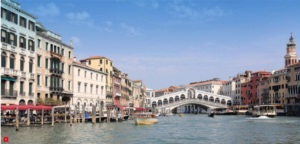
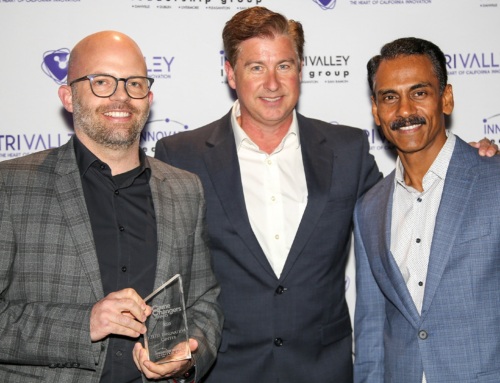
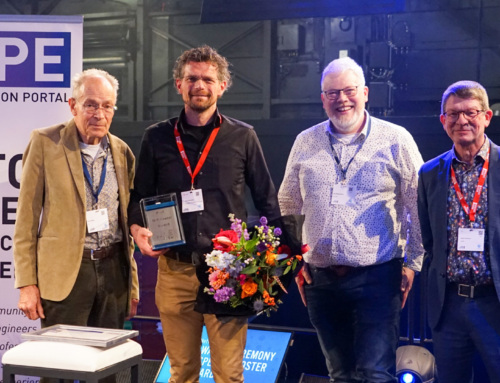
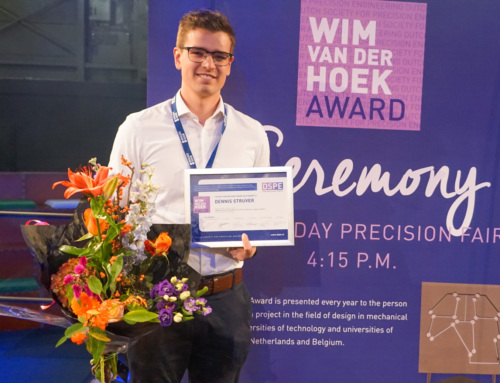
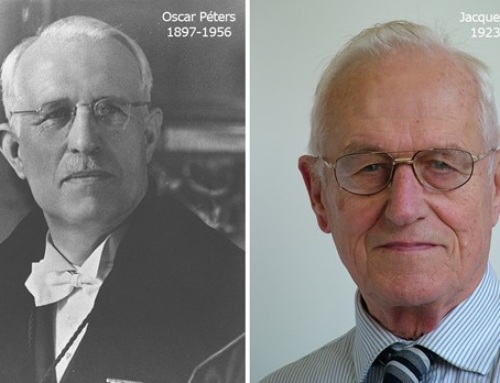








Leave A Comment